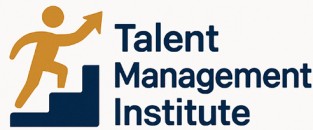
Understanding Automated Workflows in Customer Service
{"Decoding Automated Workflows in Customer Service
To truly grasp the concept of automated workflows in customer service, it's crucial to understand what these systems entail. Essentially, automated workflows refer to a series of tasks and processes that run automatically without human intervention, ensuring efficient service delivery. These systems help in managing routine, repetitive tasks, allowing the customer service team to focus on complex issues requiring a human touch.
Automated workflows could involve various business processes, from data entry and processing customer complaints to following up on service issues. The objective is to streamline workflows, improve efficiency, and enhance the overall customer experience. With the help of automation tools like Salesforce, organizations can create dynamic workflows that elevate service levels.
The implementation of these workflows involves setting up workflow rules and conditions under which certain actions are triggered. For instance, once a customer inquiry is logged into the system, an automated task might be to assign it to the appropriate customer service agent. This eliminates manual distribution, ensuring speed and accuracy in service expectations.
Organizations harnessing workflow builder tools are capable of designing intricate processes that account for various scenarios and service requirements. By incorporating salesforce automation solutions, such as process builder and flow builder, service departments can efficiently manage customer interactions at multiple touchpoints, facilitating a seamless customer journey.
Data plays a central role in this process, enabling automation systems to make informed decisions based on pre-set rules and analysis. For companies keen on adopting best practices in workflow automation, focusing on data integrity and process consistency is key.
As service demands increase, automated workflows present a sustainable solution to maintaining high standards of customer satisfaction. Companies that successfully integrate these systems often witness reduced operational costs and improved productivity in their customer service operations. For further insights on automation in customer service, you might explore the impact of AI on CSAT scores in customer support.
The Role of Process Builder in Workflow Automation
Harnessing the Power of Process Builder in Workflow Automation
The integration of workflow automation within customer service operations is significantly enhanced by using a robust tool like Salesforce Process Builder. This advanced tool plays a central role by allowing organizations to automate complex workflows seamlessly, providing an efficient pathway for managing customer inquiries and interactions. Process Builders, such as Salesforce Workflow and Flow Builder, facilitate a streamlined approach in setting up automated workflows that cater to specific business processes. By defining workflow rules and implementing automation tools, businesses can automate repetitive tasks and ensure smooth customer flow. This automation not only improves response times but also enhances the overall customer experience, offering a robust backbone for project management within customer service. By utilizing Salesforce Process Builder, enterprises can efficiently manage data and tasks, deriving key insights from automated processes. This is particularly beneficial for talent management, where maintaining accurate customer data is paramount. Moreover, having a well-structured builder process aids in the reduction of manual interventions, leading to a reduction in errors and the lessening of management overheads. Integration of automation tools like Process Builder into the organization's strategy signifies a forward-thinking approach. Companies can implement these tools as per the best practices of workflow automation, ensuring they remain competitive in the ever-evolving business landscape. The success of using Process Builder lies in its ability to adapt to changing business needs. As organizations continue to innovate, Salesforce Automation proves to be a valuable partner, offering solutions that are consistently aligned with business objectives. For more information about innovative roles in customer service and automation, you might find this article about exploring AI training roles insightful.Benefits of Automation for Talent Management
Revolutionizing Talent Management Through Automation
In the realm of talent management, the integration of automation tools can significantly enhance business outcomes. The deployment of automated workflows, supported by advanced workflow tools and software like Salesforce Process Builder, is a game-changer in optimizing daily tasks and processes. When businesses utilize automated workflows, they unlock a multitude of benefits for talent management:- Increased Efficiency: Leveraging automation minimizes the time dedicated to repetitive and manual tasks. This allows management teams to focus on strategic projects and nurture customer relationships, which ultimately leads to improved service delivery.
- Streamlined Processes: Process Builder's capabilities streamline complex business processes, enabling seamless task execution. This results in clearer workflows and reduces the potential for errors in data management and customer service operations.
- Enhanced Compliance: Workflow automation fosters adherence to best practices and rules within the organization. This ensures management maintains consistent quality standards across all service interactions.
- Data-Driven Decisions: A well-managed flow of accurate and real-time data supports informed decision-making. This empowers managers to make strategic choices based on analytics-driven insights, improving overall business outcomes.
Implementing Process Builder: Best Practices
Optimizing Process Builder for Seamless Workflow Automation
Implementing Process Builder in your customer service operations can significantly enhance efficiency and streamline business processes. However, to truly harness its potential, it’s crucial to follow some best practices. Here’s a guide to ensure your workflow automation is both effective and sustainable.
Define Clear Objectives
Before diving into the technical aspects, clearly define what you aim to achieve with automation. Whether it’s reducing response times or improving data management, having specific goals will guide the configuration of your workflows.
Leverage Salesforce Tools
Salesforce offers a suite of automation tools, including Process Builder, Flow Builder, and Workflow Rules. Each tool has its strengths, so understanding their capabilities will help you choose the right one for each task. For instance, use Process Builder for complex processes that require multiple criteria and actions.
Map Out Business Processes
Document your existing business processes to identify areas where automation can add value. This step is crucial for understanding the flow of tasks and data, ensuring that the automated workflows align with your business objectives.
Test and Iterate
Before fully deploying any automated workflow, conduct thorough testing. This helps identify potential issues and ensures that the automation performs as expected. Regularly review and update your workflows to adapt to changing business needs.
Ensure Data Integrity
Automation often involves handling large volumes of data. Implement rules to maintain data accuracy and consistency. This not only improves the quality of customer service but also enhances decision-making processes.
Train Your Team
Equip your team with the necessary skills to manage and troubleshoot automated workflows. Training ensures that your staff can effectively use the tools and adapt to any changes in the automation processes.
By following these best practices, businesses can optimize their use of Process Builder, leading to more efficient customer service operations and improved project management outcomes.
Challenges and Solutions in Workflow Automation
Overcoming Common Hurdles in Workflow Automation
Automating workflows in customer service through tools like Salesforce Process Builder can vastly improve efficiency and accuracy, yet it's not without its challenges. To effectively navigate these hurdles, it's essential to be familiar with some common issues and how they might be addressed. One typical challenge lies in integrating automation tools with existing systems. Ensuring seamless integration of software such as Salesforce with other business processes requires careful planning and coordination. It's crucial to verify that data flows smoothly between systems. This involves setting clear rules and maintaining up-to-date workflows to prevent data silos and improve process integrity. Another hurdle is the initial setup of process automation, which often demands a solid understanding of both the technology and the specific needs of the business. Individuals involved in this project should be trained on tools like Salesforce Flow and Flow Builder to leverage their full potential. Regular training sessions can aid in keeping the team abreast of the latest developments and best practices in automation. Resistance to change is also a common issue when implementing new automated workflows. Employees may feel uncertain about new processes replacing manual tasks they've grown accustomed to. Clear communication about the benefits of automation, such as reducing repetitive tasks and freeing up time for more strategic activities, can help mitigate these concerns. Additionally, ongoing monitoring and adaptive project management are essential to address any unforeseen challenges swiftly. Regularly reviewing automated processes and customer service outcomes can help identify areas for improvements or necessary modifications in workflow rules. Lastly, maintaining data security and privacy in automated workflows must not be overlooked. Ensuring compliance with relevant data protection regulations is crucial for both legal reasons and customer trust. By understanding these challenges and proactively addressing them, businesses can harness the full potential of automated workflows, bolstering their customer service operations through tools like Salesforce Process Builder.Future Trends in Customer Service Automation
Embracing the Next Wave of Customer Service Automation
As we look toward the future of customer service automation, several emerging trends are set to revolutionize the way businesses interact with their customers, streamline their processes, and enhance overall efficiency. Here are some of the key developments on the horizon:
- Growth of AI and Machine Learning: The integration of AI and machine learning in automated workflows is expected to deepen, allowing systems to learn from interactions and improve the customer experience. This evolution will enable more nuanced, personalized service that anticipates customer needs in real-time.
- Expansion of IoT Integration: With the rise of the Internet of Things (IoT), automated workflows can now harness data from a variety of connected devices to provide seamless service across channels. This will increase efficiency in responding to customer inquiries and resolving issues more proactively.
- Increased Use of Advanced Analytics: Analytics tools will become even more essential in assessing workflow efficiency and customer satisfaction. Businesses will increasingly rely on data-driven insights to fine-tune their operations and adopt best practices for workflow automation.
- Enhanced User Interfaces: Future advancements in interfaces will focus on user-friendliness, enabling teams to quickly adapt to new tools and eliminate bottlenecks. More intuitive platforms are on the horizon, making it easier to manage complex automated processes.
- Focus on Security and Compliance: As workflows become more automated, safeguarding customer data and adhering to regulations will be paramount. Businesses will invest in robust security measures to protect sensitive information within automation tools.
Ultimately, the trajectory of customer service automation points to more intelligent, integrated systems that not only elevate customer experiences but also refine internal workflows for greater business impact. By keeping an eye on these emerging trends, businesses can position themselves to effectively navigate the future landscape.



-large-teaser.webp)









